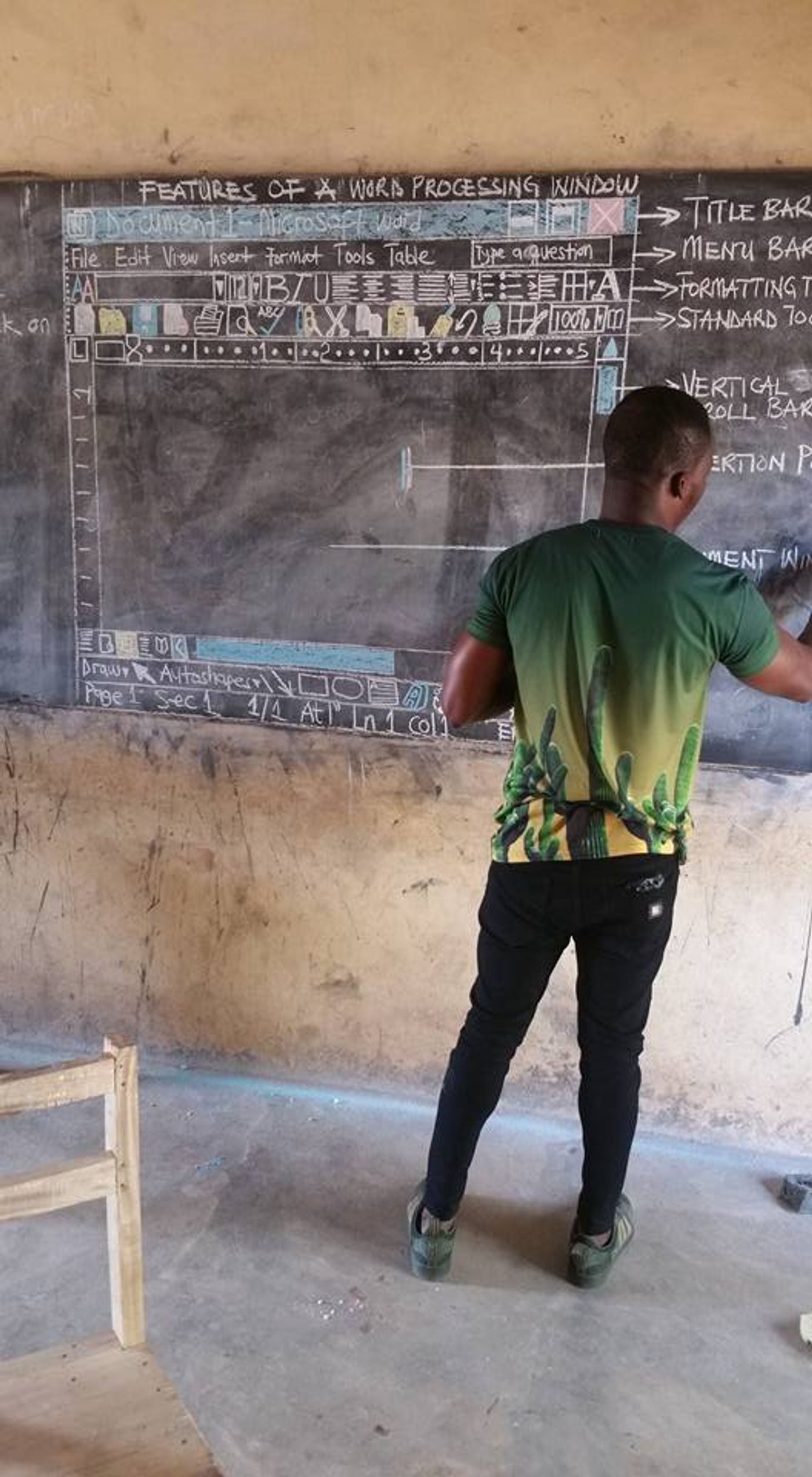Teaching a Computer Class With Chalkboard Drawings: Ghanian Instructor Welcomes Help From International Community
Like most academic and technical fields, computer science has many subtleties and layers. Teaching this subject to pre-teens and teens can be challenging with a full computer lab – imagine tackling this task with only a chalkboard. This is the method that 33-year-old Ghanian teacher Richard Appiah Akoto uses in his information and communication technology (ICT) classes at Betenase M/A Junior High School in Kumasi, which is about 250 miles from Ghana’s capital city of Accra. Akoto, who goes by the name “Owura Kwadwo Hottish” on social media, said this method is not unusual for teachers in rural schools in his area.
"I wanted them to know or see how the window will appear if they were to be behind a computer. Always wanted them to have interest in the subject so I always do my possible best for them," he told CNN.
Akoto shared the above photo on Facebook in mid-February, which then went viral. He said it takes him about 30 minutes or so to draw these elaborate screen images, which are then erased after each class. Using colored chalk, he draws windows of Microsoft Word that include multiple tabs, buttons, features and scrolling views. This resourceful teacher has drawn many other computer screens and elements, including “monitors, system units, keyboards, mouse, formatting toolbar, drawing toolbar, [how to] save as dialog box, and so on," he told CNN.
While his school has been without computers since 2011, ICT remains part of the curriculum Akoto must teach. His 14- and 15-year old students must pass a related written exam to get into high school and only one of them got an A last year. Akoto has an academic background in computers, art and graphic design. He told NPR that while he has a computer at home, the battery is not strong enough for him to bring it into school. He said that his more than 100 students are able to apply his teachings to real computers but that it is a struggle for them. If he could give them one thing, it would be computers.
A tech entrepreneur from Cameroon named Rebecca Enonchong tweeted to Microsoft Africa, “Hey @MicrosoftAfrica, he’s teaching MS Word on a blackboard. Surely you can get him some proper resources.” In response, Microsoft Africa replied, “We will equip Owura Kwadwo with a device from one of our partners, and access to our MCE program & free professional development resources on https://education.microsoft.com/.”
Akoto has reportedly seen messages from foreigners who want to send his school computers but has not received any solid offers or information yet. He is hopeful this will occur.
The students at this middle school are experiencing an example of what is called the “digital divide;” a boundary of inequity that keeps people with less economic resources from fully joining, benefiting from and contributing to contemporary digital culture. A 2015 study called, “Implementation of ICT in Learning: A Study of Students in Ghanaian Secondary Schools,” found that students in urban schools had more access to and familiarity with ICT than “semi-urban and rural school students.”
This divide is experienced to varying degrees around the globe; a Pew Research study from the same year found that school-aged children from low-income homes in the U.S. were disproportionately likely to lack home internet.









